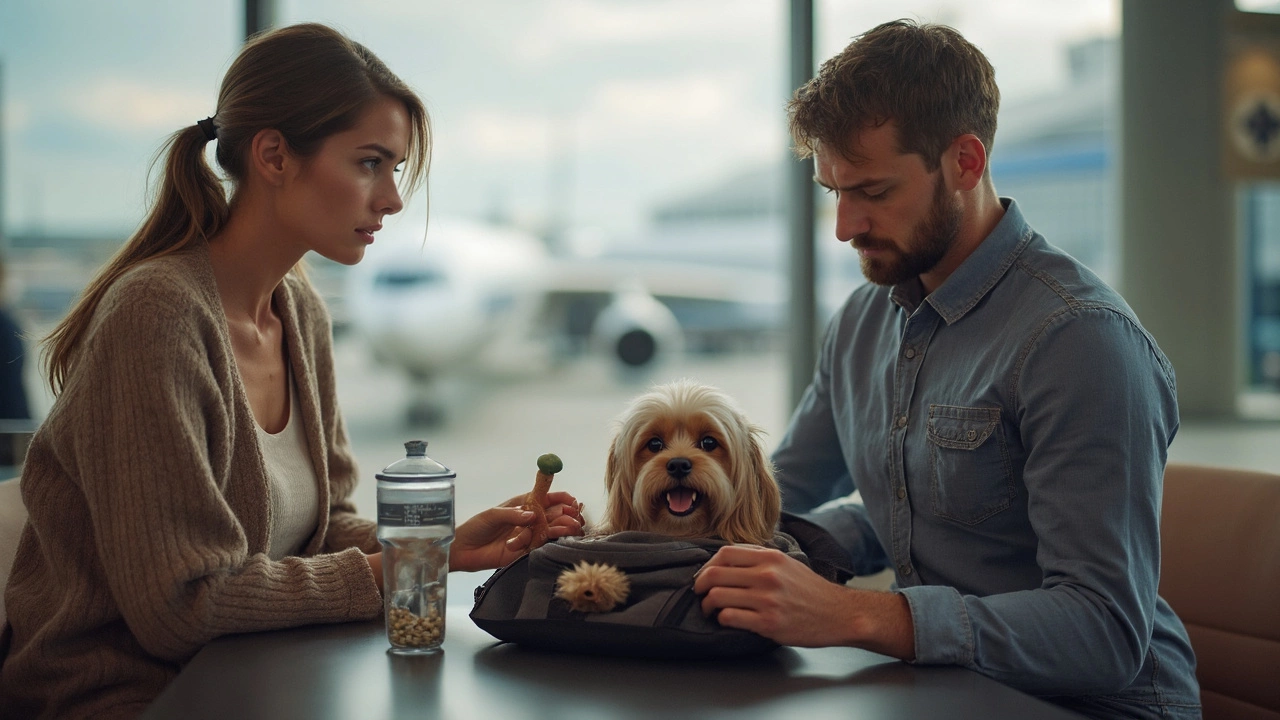Dog Travel Tips – Fly, Drive, and Explore Together
If you love taking your dog everywhere, you need solid travel advice that actually works. Below are the most useful steps for flying, driving, and finding pet‑friendly spots so your pup stays safe and happy.
Air Travel with Your Dog
First, check the airline’s pet policy. Some carriers allow small dogs in the cabin if the carrier fits under the seat; others only take pets in cargo. Knowing the rule saves you a nasty surprise at the airport.
Choose a TSA‑approved carrier that is well‑ventilated, sturdy, and the right size. Your dog should be able to turn around, stand, and lie down comfortably. A carrier with a secure latch prevents accidental openings during security checks.
Before the flight, let your dog sniff the carrier at home. Put a familiar blanket or toy inside so the space feels safe. A short practice walk inside the carrier helps reduce anxiety on the day of travel.
On the day of the flight, feed your dog a light meal six hours before departure and give a small amount of water. Avoid giving a full bowl right before the flight to prevent motion‑related upset.
When you reach the security line, remove your dog from the carrier and carry them through the metal detector while the carrier goes on the conveyor belt. Keep a leash handy and stay calm – dogs sense your energy.
If you’re traveling in cargo, request a direct flight and avoid extreme weather days. Ask the airline for a temperature‑controlled hold and a tracking tag if possible. Once you land, head straight to the pet relief area before picking up your dog.
Road Trips and Pet‑Friendly Destinations
Driving gives you more control, but you still need a plan. Secure your dog in a crate or a seat belt harness that attaches to the car’s seat belt. This keeps them from moving around and protects you in case you need to brake suddenly.
Take breaks every two to three hours. A quick walk lets your dog stretch, pee, and burn off excess energy. Carry a portable water bowl and offer water frequently, especially in warm weather.
Research pet‑friendly hotels or campsites ahead of time. Many places list dog policies, size limits, and any extra fees on their websites. Call the front desk to confirm that they can accommodate your breed and size.
Pack a travel kit with food, meds, a scoop for waste, and a first‑aid kit. Having everything in a labeled bag saves you from scrambling at the last minute.
When you arrive at a new spot, give your dog a quick walk on a leash to let them sniff and settle. Keep a calm tone and praise good behavior so they associate travel with positive experiences.
Whether you’re flying across the country or taking a weekend road trip, the key is preparation. Check policies, choose the right carrier or harness, and bring familiar items that make your dog feel at home. Follow these steps and your next adventure will be smooth for both of you.
Which City Is the Least Dog Friendly? A Guide for Dog‑Travelers
Discover which cities rank as the least dog‑friendly, why they score low, and how to travel with your pup without hassle. Get tips, alternatives, and a quick checklist.
What to Give a Dog Before a Flight: The Real Pet Travel Checklist
Flying with your dog can be stressful if you don't know how to prepare. This article covers what you can safely give your dog before a flight, including food, water, medication, and calming aids. Get practical tips on timing meals, preventing accidents, and what products to avoid. Learn how to keep your pup healthy and calm, whether they're in the cabin or cargo. Discover what's best for your unique furry friend before you ever step on a plane.

